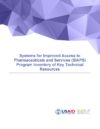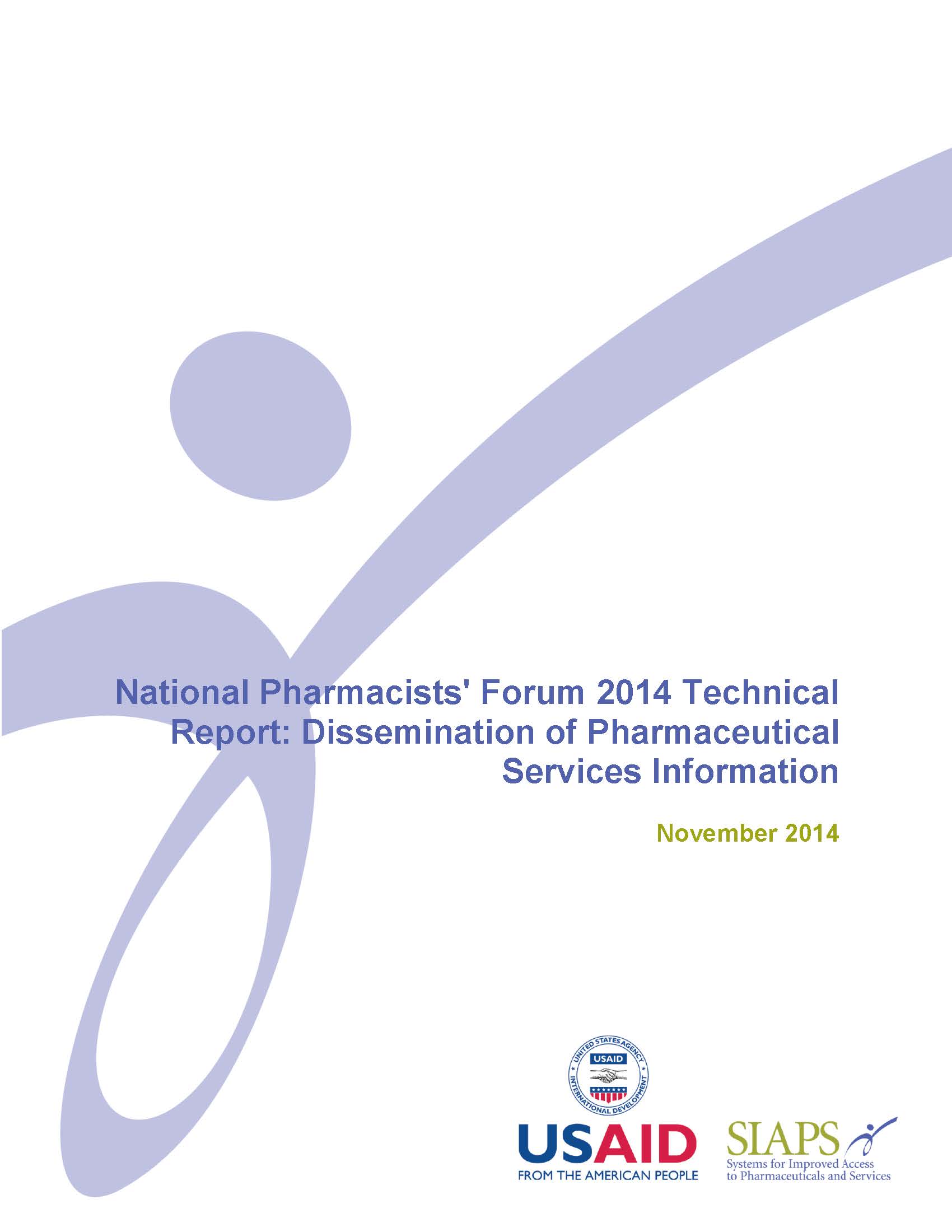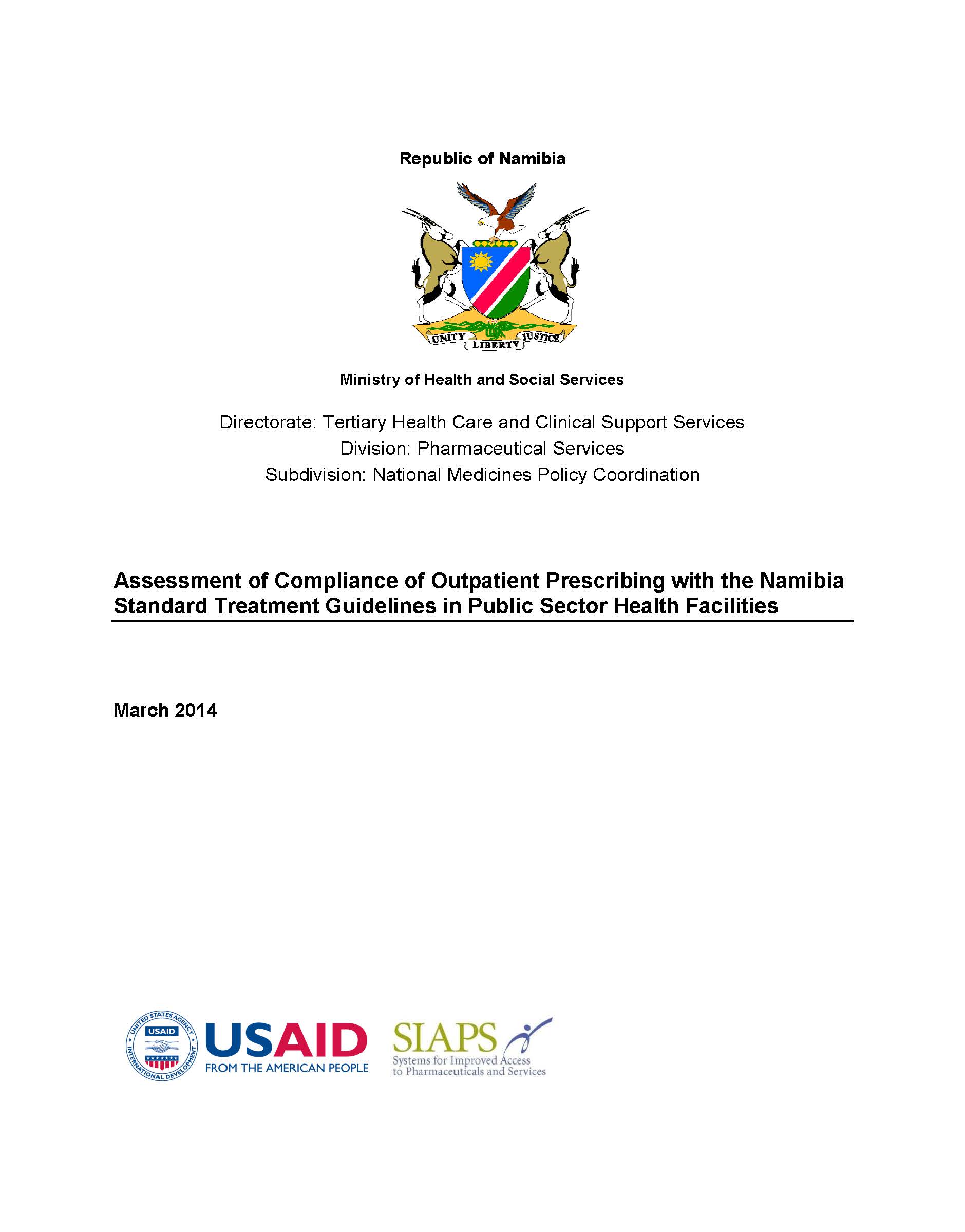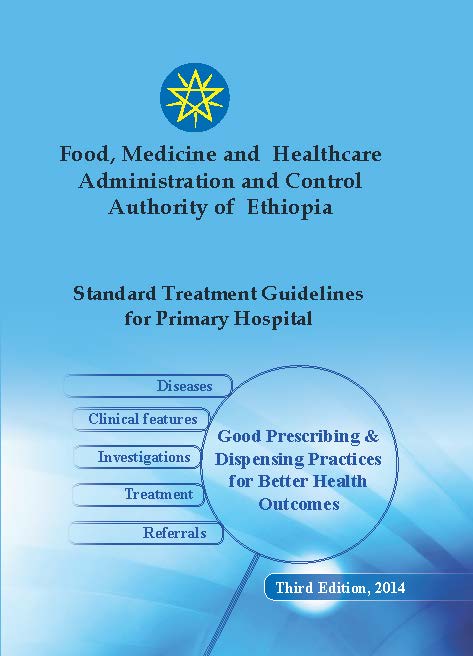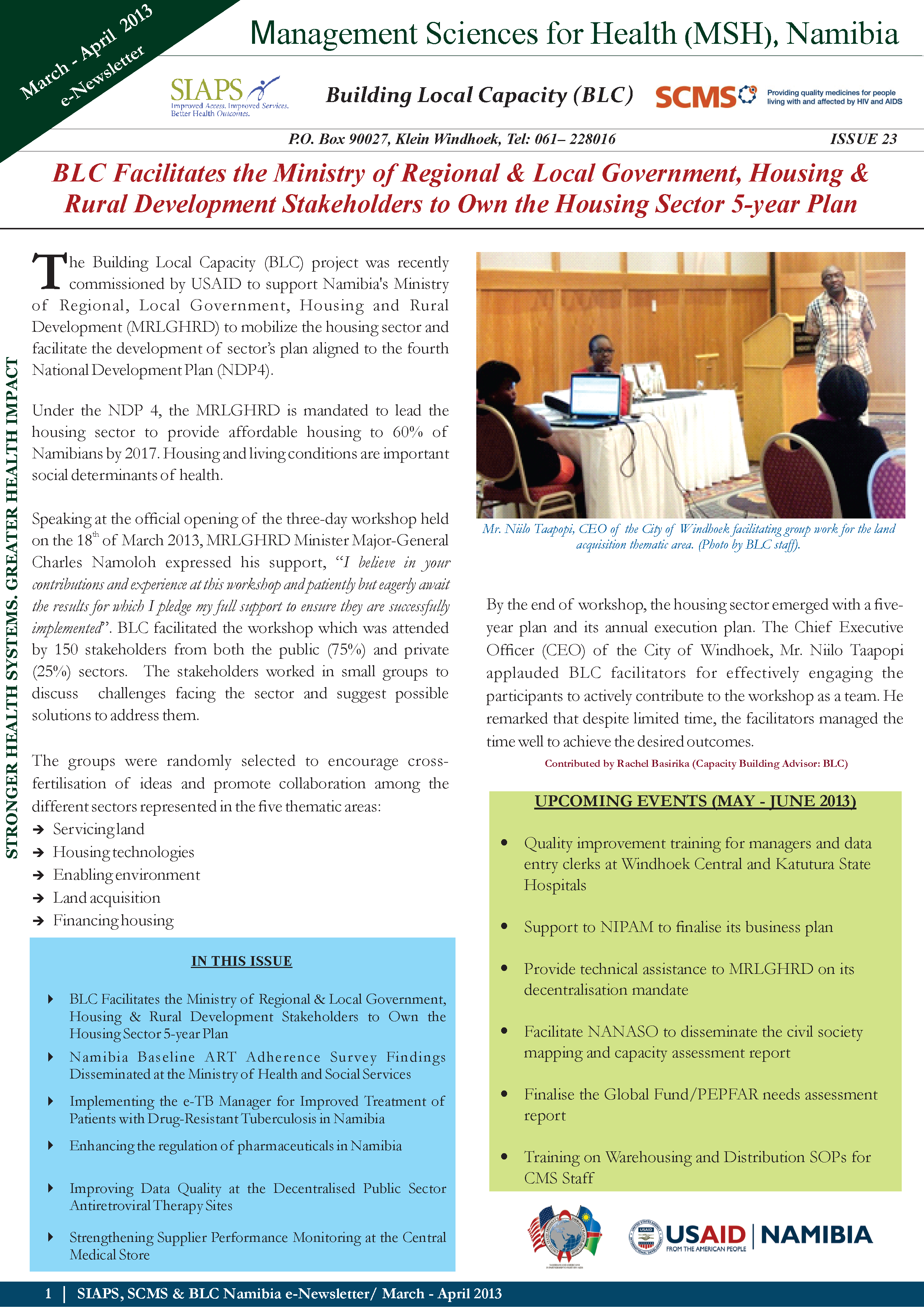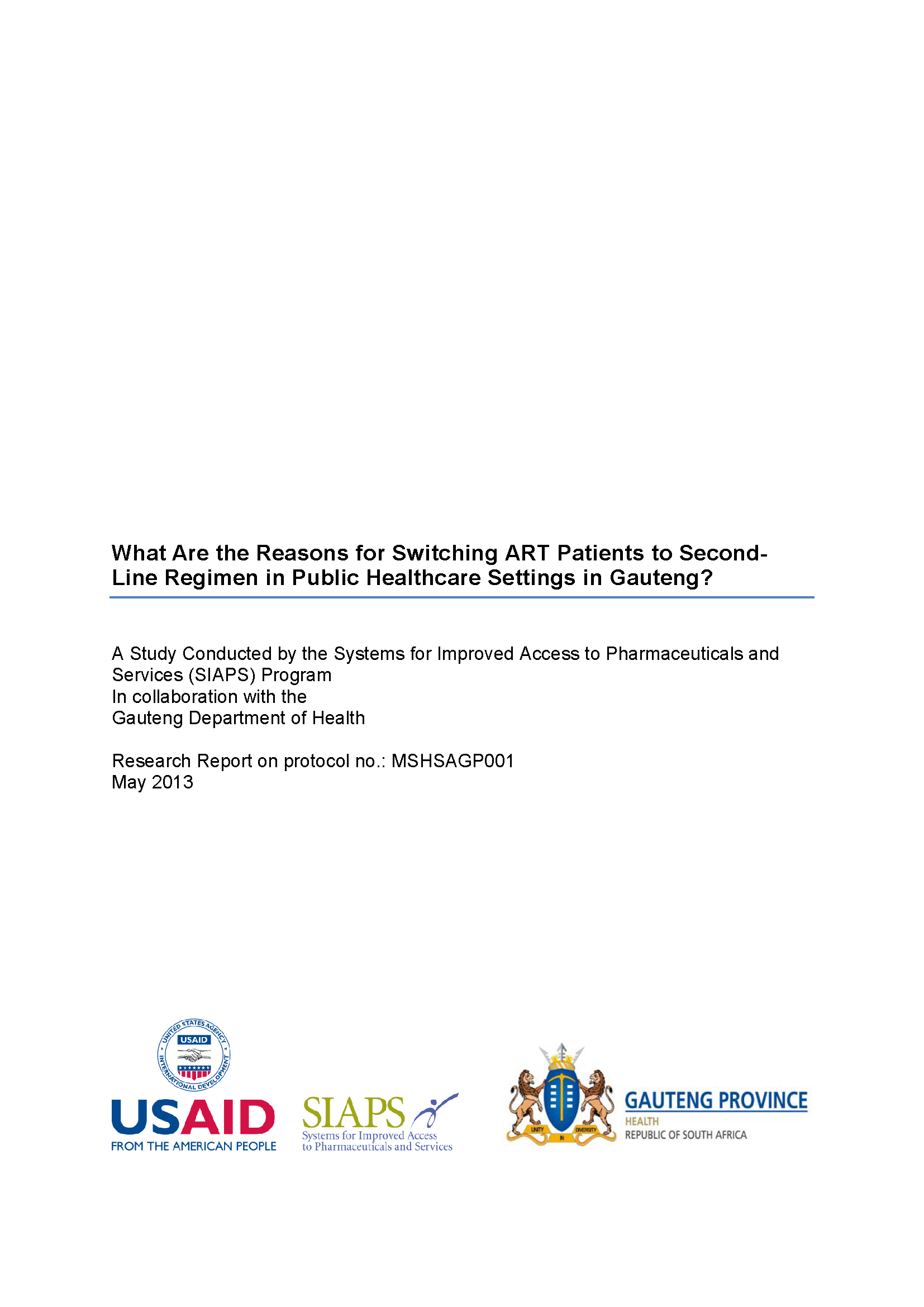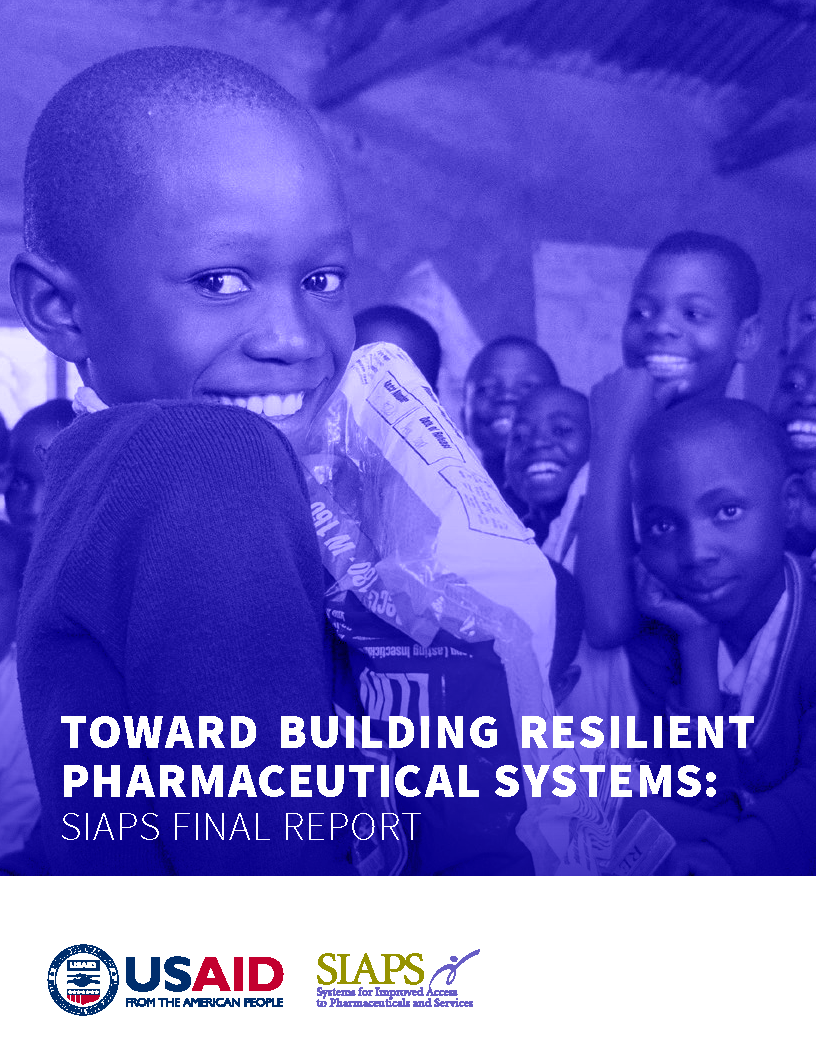The main purpose of this inventory is to serve as a reference to help stakeholders working in the pharmaceutical sector easily access and use already available SIAPS resources, including tools, experiences, and results. The document is also intended to serve as a technical legacy for SIAPS to support knowledge exchange and sustainability of related work. … Read more
AMR, Antimicrobial Resistance, Drug and Therapeutics Committee, essential medicines list, HIV/AIDS, Malaria., neglected tropical disease, pharmaceutical financing, pharmaceutical services, rational medicine use, RMNCH, standard treatment guidelines, Supply chain management, tuberculosis
SIAPS and its predecessor projects—Strengthening Pharmaceutical Systems (SPS) and Rational Pharmaceutical Management (RPM) Plus—have worked extensively to introduce and support tools that capture dispensing and supply chain data from public health facilities. SIAPS supports the Ministry of Health and Social Services (MoHSS) to conduct periodic analyses of antiretroviral therapy (ART) data by using available data … Read more
About one-third to one-half of all antibiotics used in hospitals is for surgical prophylaxis; however, 30 to 90 percent of this use is inappropriate. The Jordan Food and Drug Administration (JFDA) recently conducted a study in Jordanian hospitals that provided data on surgical antibiotic prophylaxis practices, including for cesarean section. The study findings indicated that these practices … Read more
Antibiotic prophylaxis, Antimicrobial Resistance, cesarean section, continuous quality improvement, evidence-based medicine, Health Systems Strengthening, indicator, Jordan, MP Joshi, protocol, Reproductive Maternal Newborn and Child Health, S Gammouh, standard treatment guidelines, Technical Report
The Ministry of Health and Social Services (MoHSS), in partnership with the Systems for Improved Access to Pharmaceuticals and Services (SIAPS) Program, funded by the US Agency for International Development (USAID) and implemented by Management Sciences for Health (MSH), conducted an assessment of compliance of prescribers with the Namibia Standard Treatment Guidelines (STG) and changes … Read more
Assessment, compliance, D Mabirizi, E Akpabio, E Sagwa, G Mazibuko, HR Kagoya, medicines, Namibia, prescribers, Q Niaz, rational medicine use, standard treatment guidelines, STGs, Technical Report
In a healthcare system where multiple treatment options are available, the development and implementation of standard treatment guidelines (STGs) is a crucial strategy for ensuring effective and safe use of medicines, containing health care costs, and preventing antimicrobial resistance. STGs promote therapeutically effective and economic use of medicines at different levels of health facilities, as they give clear guidance and recommendations … Read more
In this issue: BLC Supports Evidence-Based Programming of the CAFO Capacity Building Interventions, Guiding Procurement and Prescribing of ARVs and other Medicines using the NEMLIST, Namibia launches the New Progressive ART Guidelines, Equipping Public Health Supply Chain Managers with Leadership and Management Skills, Streamlining the Regulation of Pharmacy Personnel in Namibia, Improving Adherence to ARV … Read more
The purpose of the research was to identify the reasons for switching patients from first-line regimens to second-line regimens in the public healthcare setting in Gauteng Province. This study was an observational descriptive study. Randomly selected medical records for patients over 15 years old on second-line ART regimen attending public healthcare facilities in Gauteng’s five … Read more
Adverse Drug Reaction, antiretroviral therapy, Gauteng, HIV/AIDS, I Kamungoma-Dada, P Njuho, S Berrada, Second line regimen, South Africa, standard treatment guidelines, T Mkandawire
The aim of the assessment was to determine the impact of introducing the Swaziland STG/EML as measured by the outpatient prescribing patterns in Swaziland. This measurement will be made by conducting both a pre- and post-STG/EML implementation assessment.
